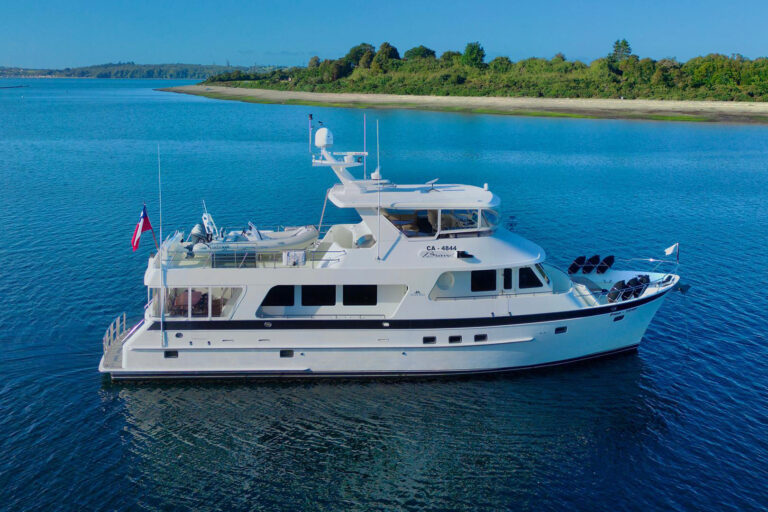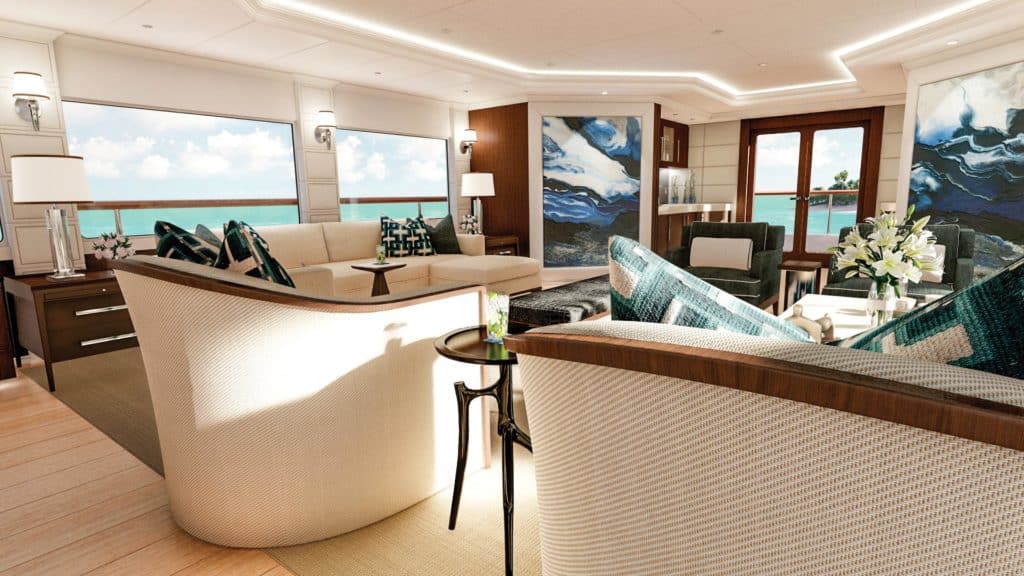
Historically speaking, designer Patrick Knowles says, refits have often been considered less exciting than other projects. Yacht owners and designers alike dreamed of new builds—of starting with a blank sheet and letting creativity take them anywhere they wanted to go.
That thinking changed with the pandemic, which caused such a run on boats that some builders are now taking orders for deliveries well into 2026. Buyers who don’t want to wait are turning to the brokerage market, which also has been bought up. They’re finding boats with good bones that need major makeovers—and make doing refits far more interesting for leading designers.

“The market has shifted,” says Knowles, who has changed the business model at Patrick Knowles Designs to meet current conditions.
The adjustment is necessary because completing a major refit in a reasonable time frame right now requires navigating supply-chain and other problems that persist from the pandemic. While clients want fast turnarounds on big projects, designers are being blocked at every pass.
“It’s a problem on things you’d never guess,” says Destry Darr, owner of Destry Darr Designs. “I was just meeting with my carpenter, and they’re still struggling to get glue, drawer slides. There’s just shortages on things. There’s long lead times and little roadblocks everywhere you turn.”
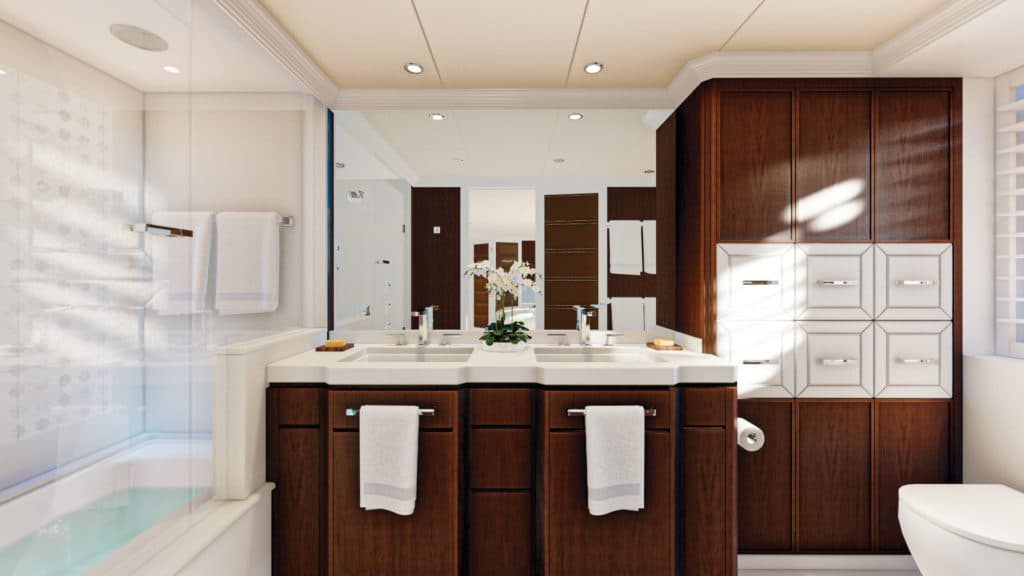
Knowles is navigating this reality by accepting projects only from owners willing to work within certain parameters. Gone are the days of owners wanting to see 25 samples of everything from door handles to fabrics before making a choice. Doing a refit that way is not practical today. What does work, he says, is the owner and designer setting a protocol at the outset for the refit’s style and overall budget, and then the designer having leeway to get it done without micromanaging.
“When you send an email to the client and the protocol is established, and we send a video that shows we have three possible solutions to a challenge, please let me know which one you want and we will execute it, that answer from the owner is what matters,” Knowles says. “It’s about trust and not having to go through layers of people to get things done.”
Not every owner is comfortable with that kind of relationship, he says, and that’s of course OK, but in the current business climate, Knowles is only looking to work with owners who are on the same page.
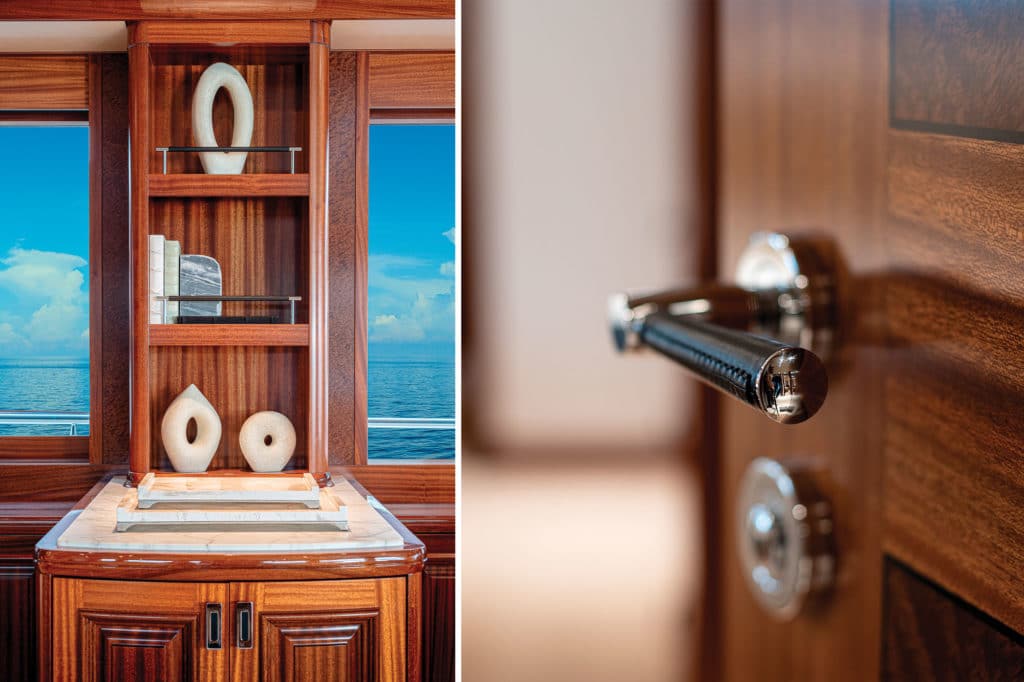
“I want large refits. High-dollar refits. Quick time frames,” he says. “And control within the parameters we discuss.”
Darr is not necessarily seeking those same types of clients, but she is also trying to help owners understand that market conditions may not be what they expect, and that they have to be realistic about how their wish list is likely to bump up against intractable problems.
“If owners think they’re going to need two or three months, they need to anticipate even more than that,” she says. “It’s always been to expect the unexpected with a refit, but now it’s even more so. Shipping is a problem now too. And we still have a labor shortage all over the place. The shipping issues—we’re all trying to do our best.”
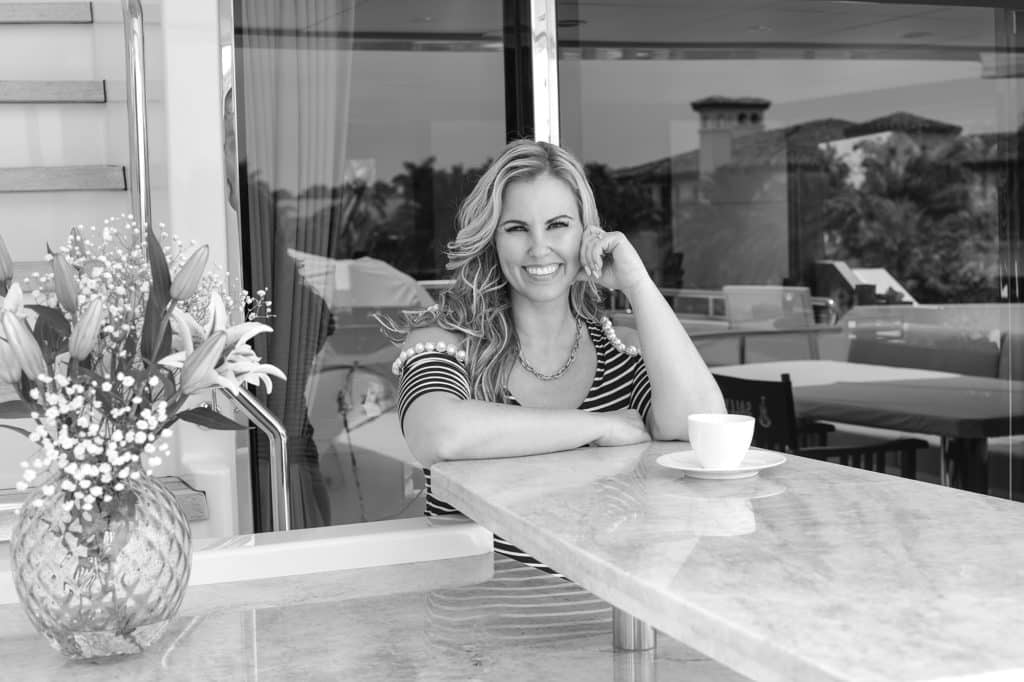
By “all,” she means far more than just designers working on boat refits. When her team, Knowles’ team or any other designer’s team try to source parts, components and other supplies right now, they are being thrust into a world where all kinds of people are battling to get their arms around a limited supply.
“Things that I would never, after doing this for 25 years, have expected to run into—that’s what we’re running into,” Darr says. “I have a client who was a contractor, and they ran out of the yellow striping paint for a parking lot, and they couldn’t find it anywhere. It’s happening in all trades, all over the world, these things you would never expect to have problems with.”
Knowles says he has instituted internal protocols to help blow through the roadblocks his team is encountering—but those protocols require yacht owners to step back from projects in ways they may not have had to step back in the past, whether previous experience was with a new yacht or with a refit where the owner was deeply engaged in decision-making about every little thing.
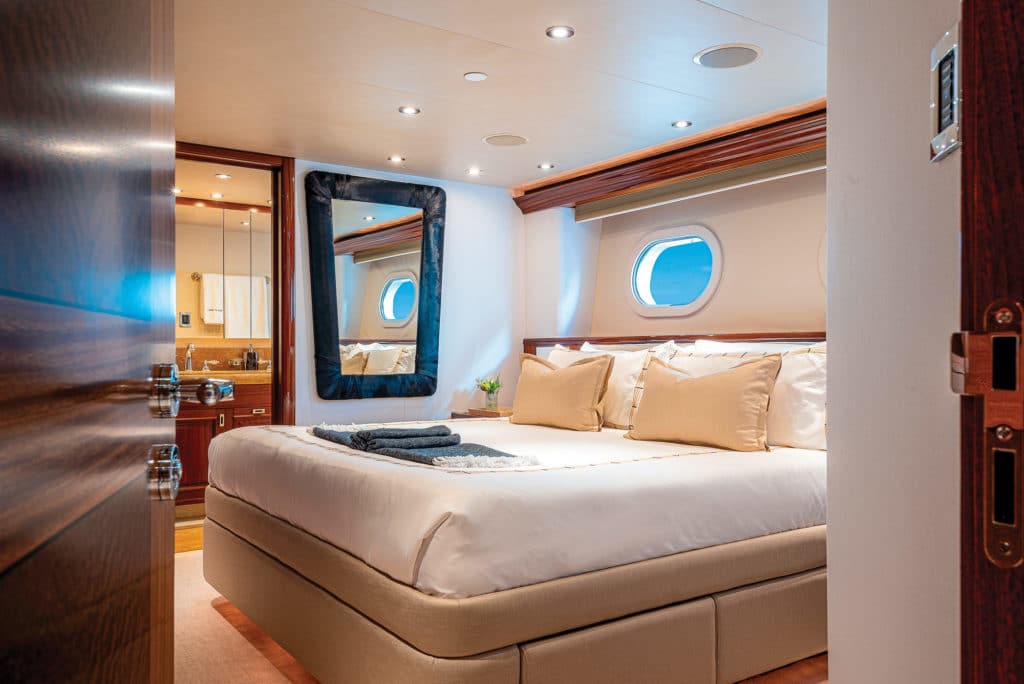
“The owner has to relinquish involvement in changes,” Knowles says. “We’re going to produce something within the parameters. We may have to swap out components, but at the end of the day, the picture of the puzzle will look about the same. If a sink isn’t available, I’m going to select another one that’s within the parameters. If it’s $150 more, then I’ll find that money somewhere else. That’s the kind of autonomy we need right now.”
If owners are willing to work that way, Knowles says, then even amid today’s challenges, they can absolutely get what they want, within their budget, in a reasonable time frame.
“When we have issues or decisions to make, you will be a part of it, but it will still be an option of solution A, B or C,” he says. “Let me tell you: Some amazing projects can be developed in a relatively short period of time.”






